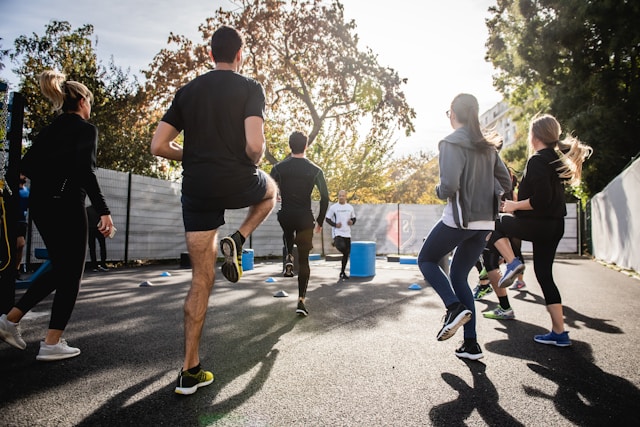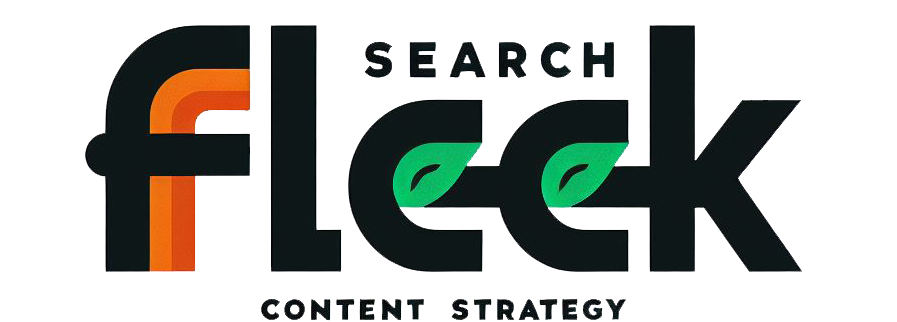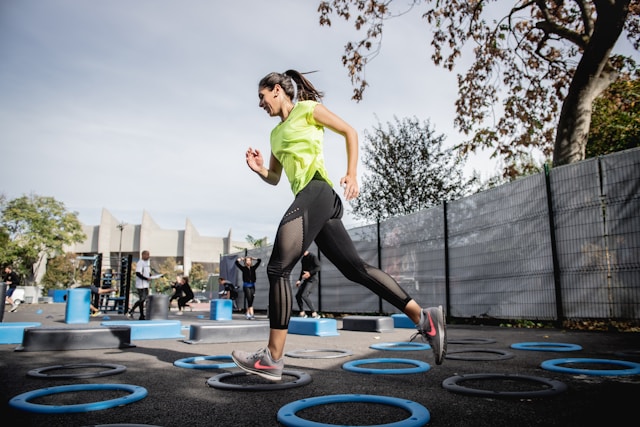The fitness industry is a crowded space. From boutique studios to large gym chains, athletic clubs are constantly vying for the attention of potential members. In today’s digital age, a strong online presence is crucial for success. Here’s where content marketing, and specifically blogging, comes in as a powerful tool.
A well-maintained blog can be a game-changer for your athletic club. It allows you to connect with your target audience, establish yourself as a trusted authority in the fitness world, and ultimately drive membership growth and brand awareness. This comprehensive guide dives deep into the world of blogging for athletic clubs, providing you with the strategies and resources you need to create a successful blog that gets results.
Understanding Your Audience
Before you start churning out blog posts, take a step back and consider who you’re trying to reach.
Defining Your Ideal Member:
- Develop a clear picture of your ideal member. Consider demographics like age, income level, and location.
- What are their fitness goals? Are they looking to lose weight, gain muscle, train for a specific race, or simply improve their overall health and well-being?
- Do they have any particular interests or preferences when it comes to exercise? Are they drawn to group fitness classes, individual training, or outdoor activities?
- By segmenting your audience based on these factors, you can tailor your blog content to their specific needs and interests.
Researching Your Audience’s Needs and Pain Points:
- What are the common challenges your target audience faces when it comes to fitness?
- Are they struggling with staying motivated? Do they lack knowledge about proper exercise techniques? Are they unsure about what to eat to reach their fitness goals?
- Conduct surveys, analyze social media comments, and talk to your existing members to understand their pain points.
- Addressing these challenges head-on in your blog content will resonate with your audience and establish you as a valuable resource.
Building Your Blog Strategy

With a clear understanding of your audience, it’s time to create a roadmap for your blog.
- Setting SMART Goals for Your Blog:
- Don’t just aim to “have a blog.” Set Specific, Measurable, Achievable, Relevant, and Time-Bound (SMART) goals for your content marketing efforts.
- Do you want to increase website traffic by 20% in 3 months? Generate a certain number of leads per month? Drive a specific number of new member sign-ups?
- Align your blog goals with your overall club objectives, whether it’s member retention, brand building, or promoting specific programs or services.
- Choosing the Right Blogging Platform:
- There are numerous blogging platforms available, each with its own strengths and weaknesses.
- Popular options include WordPress, Wix, and Squarespace. Consider factors like ease of use, customization features, and integration capabilities with your club website and social media platforms.
- If you’re not tech-savvy, a user-friendly platform with drag-and-drop functionality might be the way to go. If you have more design experience and want greater control over the look and feel of your blog, a platform with more customization options might be a better fit.
- Developing a Content Calendar:
- Planning your blog posts in advance is key to consistency and success. Create a content calendar that outlines topics for the coming weeks or months.
- Aim for a healthy mix of informative, engaging, and promotional content. Informative posts can educate readers on various fitness topics, from workout routines to nutrition advice. Engaging content can include inspirational member stories, equipment reviews, or listicles for easy consumption. Promotional content can highlight your club’s unique offerings, upcoming events, or special deals.
- Consider incorporating guest posts from industry experts or your own club staff to add fresh perspectives and expertise to your blog.
Creating Compelling Blog Content
Now comes the fun part: crafting engaging content that your audience will love.
Content Formats for Success:
The best blogs offer a variety of content formats to cater to different learning styles and preferences.
- Informative blog posts are a cornerstone of any athletic club blog. Offer workout tips, delve into specific exercises, or provide guidance on nutrition and healthy eating.
- Inspirational stories can be incredibly powerful. Showcase member success stories, highlight personal transformations, or feature interviews with inspiring athletes.
- Equipment reviews can help readers make informed decisions about their workout gear.
- Listicles and infographics present complex information in an easily digestible way.
- Don’t underestimate the power of video. Instructional videos demonstrating proper exercise techniques or virtual tours of your club facilities can be highly engaging and informative.
Crafting Engaging Headlines and Introductions:
- First impressions matter. Your headlines and introductions are what will grab your reader’s attention and entice them to delve deeper into your content.
- Use strong verbs and keywords that are relevant to your target audience’s search queries.
- Pose questions or offer solutions to reader problems in your headlines.
- Highlight the unique value proposition of your blog post in the introduction. Let readers know what they’ll gain by taking the time to read it.
Optimizing Your Blog for Search Engines (SEO)
In today’s digital landscape, search engine optimization (SEO) is crucial for driving organic traffic to your blog.
Keyword Research and Integration:
- Conduct keyword research to identify relevant search terms that your target audience is using.
- Tools like Google Keyword Planner can help you discover high-volume, low-competition keywords that can position your blog for success.
- Once you’ve identified your target keywords, naturally integrate them throughout your blog posts, including in the title tags, meta descriptions, headings, and body content. However, avoid keyword stuffing, which can negatively impact your SEO ranking.
On-page Optimization Techniques:
- On-page optimization refers to optimizing the individual elements of your blog posts to improve search engine ranking.
- This includes crafting compelling title tags and meta descriptions that accurately reflect the content of your post and entice clicks.
- Use alt text to describe the content of your images, both for SEO purposes and accessibility.
- Internal linking is another important on-page SEO tactic. Link to relevant pages on your club website within your blog posts to improve website navigation and user experience, as well as signal relevance to search engines.
Building Backlinks from Reputable Sources:
- Backlinks are essentially links from other websites to your blog. Earning backlinks from high-authority websites in the fitness industry can significantly boost your SEO ranking.
- Guest blogging on relevant websites or collaborating with fitness influencers and bloggers are excellent ways to build backlinks.
Promoting Your Blog Content

Creating great content is only half the battle. You also need a solid strategy for promoting your blog and getting it in front of your target audience.
- Leveraging Social Media Platforms:
- Social media is a powerful tool for promoting your blog content. Share your blog posts on Facebook, Instagram, and Twitter, using relevant hashtags to increase visibility.
- Don’t just post links – create engaging snippets or teasers that will entice users to click through and read the full post.
- Utilize visual content like short video teasers or eye-catching graphics to grab attention on social media feeds.
- Encourage social media engagement by asking questions, responding to comments, and participating in conversations.
- Email Marketing Strategies:
- Your email list is a valuable asset for promoting your blog content. Include links to your latest blog posts in your club’s email newsletters.
- Segment your email list to target specific content to different demographics or interests within your audience. This will improve engagement and click-through rates.
- Paid Advertising Options (Optional):
- Consider paid advertising options like social media ads or search engine marketing (SEM) to further promote your blog content and reach a wider audience.
- However, paid advertising requires a budget and a well-defined strategy. Carefully research your target audience and tailor your ad campaigns accordingly to maximize return on investment (ROI).
Measuring and Analyzing Blog Performance
Tracking your blog’s performance is essential for understanding what’s working and what’s not. By analyzing key metrics, you can make data-driven decisions to optimize your blog strategy for continued success.
Tracking Key Metrics:
- There are a variety of metrics you can track to measure the performance of your blog.
- Website traffic is a good starting point. Tools like Google Analytics can provide insights into how many visitors your blog is attracting and where they’re coming from.
- Track blog post engagement metrics like likes, comments, and shares to gauge reader interest.
- Look at lead generation and conversion rates to see how your blog is contributing to your club’s overall marketing goals.
- Don’t forget to track member acquisition and retention data. A successful blog can play a significant role in attracting new members and keeping existing members engaged.
Analyzing Results and Making Adjustments:
- Regularly analyze the data you’re collecting to identify trends and see what content resonates most with your audience.
- Are certain types of content consistently generating high engagement?
- Are there specific keywords that are driving more traffic to your site?
- Use these insights to refine your blog strategy and create content that your audience craves.
- Don’t be afraid to experiment and try new things. The blogging landscape is constantly evolving, so staying adaptable is key.
Conclusion
A well-maintained blog can be a game-changer for your athletic club. By providing valuable content, establishing yourself as a trusted resource, and engaging with your audience, you can attract new members, boost brand awareness, and ultimately achieve your club’s marketing and growth objectives.
Remember, content creation is an ongoing process. Consistency is key, so commit to creating high-quality content on a regular basis. Stay up-to-date on the latest fitness trends and adapt your blog strategy accordingly to maintain audience interest. By following these tips and strategies, you can turn your athletic club blog into a powerful tool for success.
Emon Anam, CEO of Search Fleek, isn't your typical digital guru. He brings a unique blend of financial expertise (former banking pro!) and digital marketing mastery to the table. A self-proclaimed "SEO Sherlock Holmes," Emon unlocks content secrets for local businesses and SaaS companies. But beyond the keyboard, he's a devoted family man, music enthusiast, and cricket champion. Let Emon weave your digital success story!
AI Writing Disclaimer
This post was initially researched and outlined by me. The content was then generated by an AI language model using the provided information. The final text has been reviewed and edited by me for accuracy and clarity.




